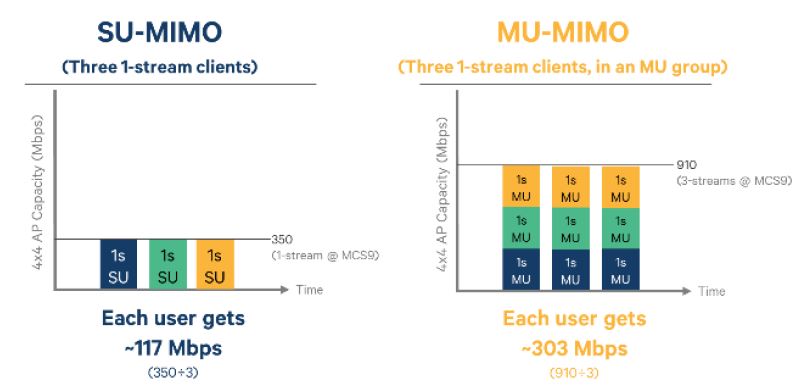|
This article is sponsored by Qualcomm Atheros & Linksys.
Wi-Fi is wonderful indeed, freeing us to roam untethered. And our appetite for wireless living continues to grow. A May 2014 Machina Research study says the number of connected devices in the average U.S. home is expected to increase from 9 to more than 20 devices by 2020. Some of us are already there. Our devices' data appetites are growing too. More video and music is being streamed to our mobile devices than ever before and video and photos shot on our phones is also moving in the other direction, backing up to the cloud. Cisco studies say global mobile data traffic grew 81% in 2013, and is expected to increase nearly 11x between 2013 and 2018. While enterprises can just add access points to expand network capacity, this solution is also hitting a wall. Today's Wi-Fi networks can't just work harder, they also need to work smarter. 802.11ac brought significantly more bandwidth to the party with three and four stream routers. But due to size and power restrictions, most mobile devices handle only a single stream and can't access full network capacity. Even worse, these "slower" single-antenna devices make the network run very inefficiently, eating up lots of wireless airtime while moving less data. How MU-MIMO HelpsThree words: total throughput improvement. Here's how.
MU-MIMO (Multi-User Multiple Input Multiple Output) technology is part of the 802.11ac standard, using an advanced form of beamforming to enable simultaneous AP-to-client transmission. The left side of the diagram below shows how Wi-Fi works today in SU (Single User) mode. A three-stream (3 antenna) router may ideally support 910 Mbps of total bandwidth. But single-stream (1 antenna) mobile devices can only access about a third of that total. Even worse, they must share that reduced total, as each device waits its turn to access the router. When all the math is done, each device ends up with less than 120 Mbps out of that original 900. MU-MIMO's "secret sauce" is that it sends data to up to three devices simultaneously, using a four-stream (four antenna) router. More data uses more bandwidth, which the router can happily supply. So in the time it took before for each device to get only one chunk of data, each one now gets three. This means effective bandwidth use per device has increased around 3x!

MU-MIMO increases per device throughputAlthough SU devices can't take directly take advantage of MU transmissions, they still benefit. The diagram below shows freed-up airtime, which can be used for "legacy" (802.11a/b/g/n) and single user MIMO (SU-MIMO) clients.

MU-MIMO frees airtime for legacy devicesImproving throughput use in mixed device (SU/MU) wireless LANs is an essential feature of MU-MIMO. MU-MIMO must be supported on both ends of a wireless link (router/AP and client device) and it will take time for MU-MIMO devices to make their way into your pocket. But adding even two MU devices to a mixed wireless LAN running on an MU router will show measurable improvement. And adding more will be even better. MU-MIMO brings advantages to wireless gamers, too. Because MU clients share airtime, data moves more quickly and latency is reduced. If all this sounds good, Why Wait™? Linksys' EA8500 Max-Stream AC2600 MU-MIMO Smart Wi-Fi Router powered by Qualcomm Atheros MU | EFX technology is here now.
|